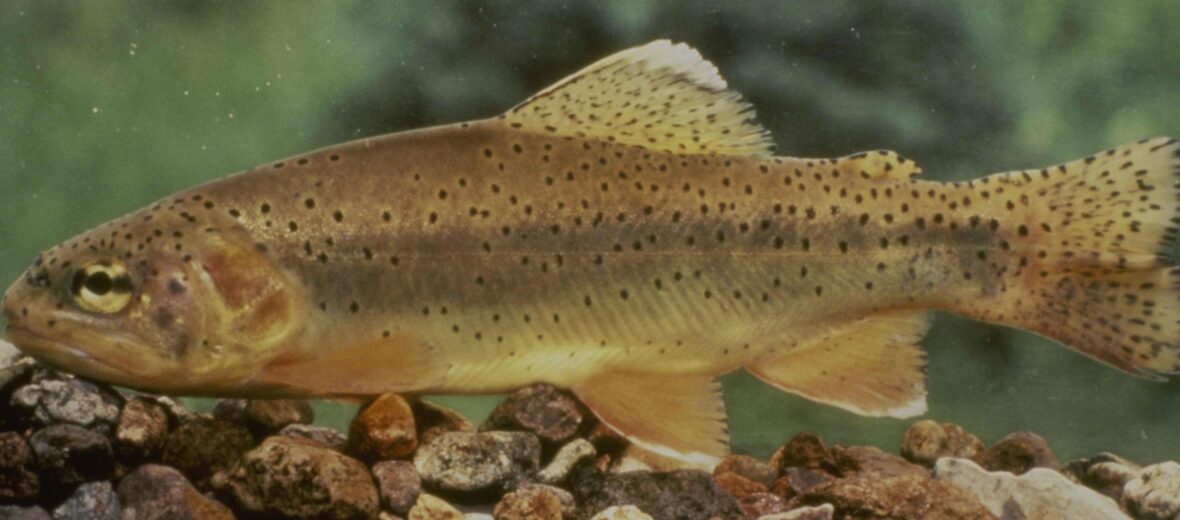
Found in silt heavy streams, the Gila trout calls Arizona and New Mexico home. These troubled trout have faced adversity for ages. More recently at the hands of agriculture and rerouting rivers and streams. Gilas are among the rarest trout species in the United States. This is due to multiple reasons. With the efforts of many, these trout are making a come back but still have a ways to go.
First the Stats…
Scientific name: Oncorhynchus gilae
Weight: Up to 1+ lbs.
Length: Up to 22+ inches
Lifespan: Up to 6 years
Now on to the Facts!
1.) They prefer water that is under 77 degrees and higher elevations. Typically over 5,000 feet.
2.) In 1967, there were just 20 miles of habitat left. The U.S. Fish and Wildife Service listed them as Endangered and programs were put in place to boost their populations.
3.) It is thought that Gila and Apache trout evolved at the same time. It wasn’t until about 1972 when the 2 were classified as 2 distinct species.
4.) Gilas feed on aquatic insects like ephemeropterans, trichopterans, coleopterans, chironomids, and also eat small fish.
5.) The introduction of brown, rainbow, and brook trout has decimated the Gila trout populations as they out compete for food, prey on their young, and eat their eggs. Add in agricultural water needs and you’ve got a tough time surviving.
But wait, there’s more on Gila trout!
6.) Gila trout are able to hybridize with rainbow trout. This has severely reduced the range of “pure” populations of Gilas.
7.) These trout usually spawn during early spring to late summer.
Did you know…?
When fire kills off fish in streams, it becomes possible to stock these trout without competition from other species. This also helps prevent the need for using a piscicide (a chemical used to eliminate dominant species of fish) to clear the way for young Gila trout.
8.) Females lay between 150 – 680 eggs.
Now a Short Gila Trout Video!
Also, check out the Critter Science YouTube channel. Videos added frequently!
Want to suggest a critter for me to write about? Let me know here.



